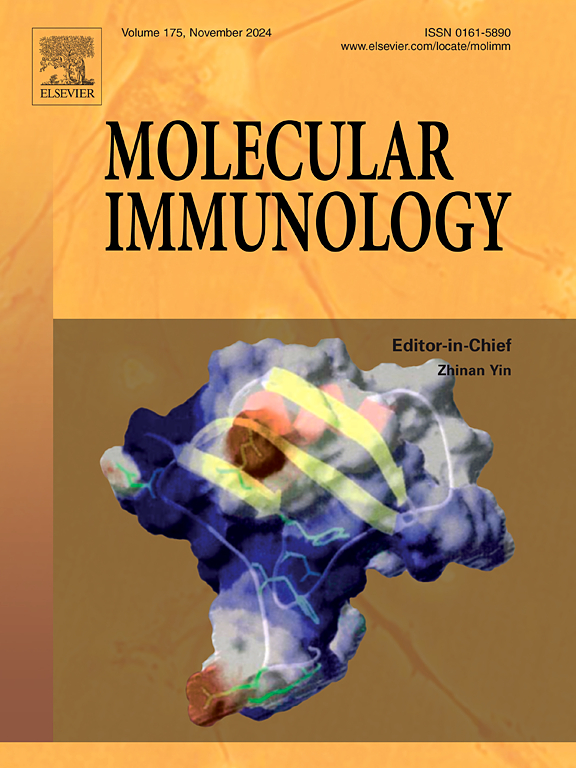Proteome-wide reverse vaccinology to identify potential vaccine candidates against Staphylococcus aureus
IF 3
3区 医学
Q2 BIOCHEMISTRY & MOLECULAR BIOLOGY
引用次数: 0
Abstract
Staphylococcus aureus is a common cause of infections, both in the community and in healthcare settings, ranging from mild to severe cases that can often be life-threatening. Previous attempts to develop effective vaccines against S. aureus have been somewhat unsuccessful, emphasizing the need to explore its proteome and identify potential targets for vaccine development. This study aimed to comprehensively analyze the S. aureus proteome using network-based interactomics and high-throughput reverse screening techniques to identify promising vaccine candidates. We employed a computational proteome screening platform that integrated data from various sources, including experimental findings from a thorough literature review. By combining these datasets, we identified eighteen protein vaccine targets that demonstrated strong potential in eliciting an immune response against S. aureus. This approach is significant as it sheds light on the crucial pathways involved in the survival and pathogenesis of S. aureus while identifying key proteins within these pathways involved in its pathogenesis. This study serves as a proof-of-principle, demonstrating the potential of a customized platform designed specifically to discover vaccine candidates against S. aureus and tackle its canonical infections.
全蛋白质组反向疫苗学鉴定金黄色葡萄球菌潜在候选疫苗
无论是在社区还是在卫生保健机构,金黄色葡萄球菌都是一种常见的感染原因,从轻度到重度不等,往往可危及生命。以前开发有效的金黄色葡萄球菌疫苗的尝试在一定程度上是不成功的,这强调了探索其蛋白质组和确定疫苗开发的潜在靶点的必要性。本研究旨在利用基于网络的相互作用组学和高通量反向筛选技术全面分析金黄色葡萄球菌蛋白质组,以确定有希望的候选疫苗。我们使用了一个计算蛋白质组筛选平台,该平台整合了来自各种来源的数据,包括来自全面文献综述的实验结果。通过结合这些数据集,我们确定了18个蛋白质疫苗靶点,这些靶点在引发针对金黄色葡萄球菌的免疫应答方面表现出很强的潜力。这种方法具有重要意义,因为它揭示了参与金黄色葡萄球菌生存和发病机制的关键途径,同时确定了这些途径中参与其发病机制的关键蛋白。这项研究作为一个原理证明,展示了一个定制平台的潜力,该平台专门设计用于发现针对金黄色葡萄球菌的候选疫苗并解决其典型感染。
本文章由计算机程序翻译,如有差异,请以英文原文为准。
求助全文
约1分钟内获得全文
求助全文
来源期刊

Molecular immunology
医学-免疫学
CiteScore
6.90
自引率
2.80%
发文量
324
审稿时长
50 days
期刊介绍:
Molecular Immunology publishes original articles, reviews and commentaries on all areas of immunology, with a particular focus on description of cellular, biochemical or genetic mechanisms underlying immunological phenomena. Studies on all model organisms, from invertebrates to humans, are suitable. Examples include, but are not restricted to:
Infection, autoimmunity, transplantation, immunodeficiencies, inflammation and tumor immunology
Mechanisms of induction, regulation and termination of innate and adaptive immunity
Intercellular communication, cooperation and regulation
Intracellular mechanisms of immunity (endocytosis, protein trafficking, pathogen recognition, antigen presentation, etc)
Mechanisms of action of the cells and molecules of the immune system
Structural analysis
Development of the immune system
Comparative immunology and evolution of the immune system
"Omics" studies and bioinformatics
Vaccines, biotechnology and therapeutic manipulation of the immune system (therapeutic antibodies, cytokines, cellular therapies, etc)
Technical developments.
 求助内容:
求助内容: 应助结果提醒方式:
应助结果提醒方式:


